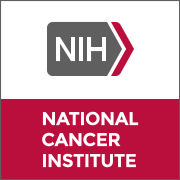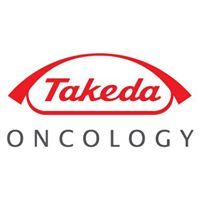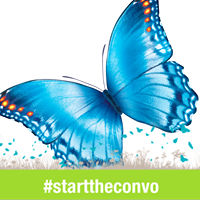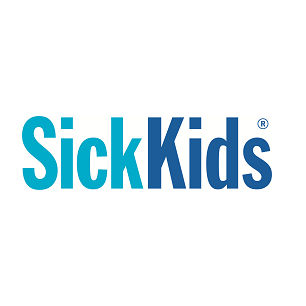预约演示
更新于:2025-12-02
Tovorafenib
更新于:2025-12-02
概要
基本信息
药物类型 小分子化药 |
别名 AMG-2112819、BIIB-024、DAY101 + [3] |
作用方式 抑制剂 |
作用机制 PDK1抑制剂(磷酸肌醇依赖性激酶1抑制剂)、Raf kinase抑制剂(RAF丝氨酸/苏氨酸蛋白激酶家族抑制剂) |
最高研发阶段批准上市 |
首次获批日期 美国 (2024-04-23), |
最高研发阶段(中国)- |
特殊审评优先审评 (美国)、突破性疗法 (美国)、加速批准 (美国)、孤儿药 (美国)、罕见儿科疾病 (美国)、孤儿药 (欧盟)、孤儿药 (日本) |
登录后查看时间轴
结构/序列
分子式C17H12Cl2F3N7O2S |
InChIKeyVWMJHAFYPMOMGF-ZCFIWIBFSA-N |
CAS号1096708-71-2 |
关联
13
项与 Tovorafenib 相关的临床试验NCT06965114
A Phase 1 Study of Combination Tovorafenib (DAY101) and Rituximab Treatment in Relapsed or Refractory Classical Hairy Cell Leukemia and Phase 2 Randomized Study Comparing Tovorafenib (DAY101) and Rituximab With Cladribine and Rituximab for Front-Line Treatment of Classical Hairy Cell Leukemia
This phase I/II trial tests the safety, side effects, and effectiveness of tovorafenib in combination with rituximab in patients with classical hairy cell leukemia (cHCL) that has come back after a period of improvement (recurrent) or that has not responded to previous treatment (refractory) and compares the effect of tovorafenib and rituximab to current standard treatment of cladribine and rituximab in cHCL patients that have not yet received treatment. Tovorafenib blocks certain proteins made by the mutated BRAF gene, which may help keep cancer cells from growing. It is a type of kinase inhibitor. Rituximab is a monoclonal antibody. It binds to a protein called CD20, which is found on B cells (a type of white blood cell) and some types of cancer cells. This may help the immune system kill cancer cells. Cladribine damages the cell's deoxyribonucleic acid and may kill cancer cells. It is a type of antimetabolite. Giving tovorafenib in combination with rituximab may be safe and tolerable and more effective than cladribine with rituximab in treating patients with untreated, recurrent or refractory cHCL.
开始日期2026-06-27 |
申办/合作机构 |
NCT07206849
A Phase 2 Study of Tovorafenib in Pediatric and Young Adult Patients Newly Diagnosed With High-Grade Glioma (HGG), Including Diffuse Intrinsic Pontine Glioma (DIPG), Which Harbor Alterations in the Mitogen-Activated Protein Kinase (MAPK) Pathway
The goal of this study is to determine the efficacy of the study drugs tovorafenib to treat pediatric and young adult patients newly diagnosed with a high-grade glioma (HGG), including DIPG, that have genetic changes in pathways (MAPK) that this drug targets.
The main question the study aims to answer is whether tovorafenib can prolong the life of patients diagnosed with HGG, including DIPG.
The main question the study aims to answer is whether tovorafenib can prolong the life of patients diagnosed with HGG, including DIPG.
开始日期2026-03-01 |
NCT06381570
VICTORY: A Pilot Study to Investigate Safety and Efficacy of Weekly Combination of Intravenous Vinblastine With Oral Type II RAF Inhibitor Tovorafenib in Pediatric Patients With Recurrent/Progressive RAF Altered Low Grade Gliomas
This is a Pilot, multicenter, open-label study of patients less than or equal to 25 years, with recurrent or progressive LGG harboring a CRAF or BRAF alteration, including BRAF V600 mutations and KIAA1549: BRAF fusions. Patients with BRAF or CRAF alterations will be identified through molecular assays as routinely performed at Clinical Laboratory Improvement Amendments (CLIA) of 1988 or other similarly certified laboratories.
The study will be conducted in two sequential phases:
Phase A: A Feasibility (combination dose finding) phase, followed by Phase B: An Efficacy phase. The maximum tolerated dose (MTD)/Recommended Phase 2 Dose (RP2D) of the combination as determined in Phase A would be the dose used in Phase B. The patients on Phase A who were below the MTD/RP2D would be eligible for intra-patient dose escalation to MTD/RP2D subject to criteria outlined later
The study will be conducted in two sequential phases:
Phase A: A Feasibility (combination dose finding) phase, followed by Phase B: An Efficacy phase. The maximum tolerated dose (MTD)/Recommended Phase 2 Dose (RP2D) of the combination as determined in Phase A would be the dose used in Phase B. The patients on Phase A who were below the MTD/RP2D would be eligible for intra-patient dose escalation to MTD/RP2D subject to criteria outlined later
开始日期2024-03-21 |
申办/合作机构 |
100 项与 Tovorafenib 相关的临床结果
登录后查看更多信息
100 项与 Tovorafenib 相关的转化医学
登录后查看更多信息
100 项与 Tovorafenib 相关的专利(医药)
登录后查看更多信息
42
项与 Tovorafenib 相关的文献(医药)2025-12-01·COMPUTATIONAL BIOLOGY AND CHEMISTRY
Identification of different lung adenocarcinoma subtypes in combination with antidiuretic hormone-related genes and creation of an associated index to predict prognosis and guide immunotherapy
Article
作者: Dai, Hong ; Lv, Yuankai ; Zheng, Hao ; Cai, Xiaoping
BACKGROUND:
Lung adenocarcinoma (LUAD) is one of the most aggressive and rapidly lethal tumor types. Previous studies have demonstrated the involvement of antidiuretic hormone (ADH)-related genes in cancer. However, the role of ADH-related genes in LUAD remains unclear. Therefore, investigating the characteristics of these genes in LUAD is essential.
METHODS:
Differentially expressed genes (DEGs) associated with ADH in LUAD were identified using the STRING database. Consensus clustering was performed, and a protein-protein interaction network was constructed for the DEGs between subtypes. Genes extracted from the PPI network underwent univariate, LASSO, and multivariate Cox regression analyses to develop a predictive model for LUAD. A nomogram integrating clinical data and risk scores was created, and its prognostic power for overall survival (OS) in LUAD patients was evaluated. Additionally, LUAD patients were analyzed for targeted therapies, immune landscape, functional enrichment, and mutation profiles. Finally, qRT-PCR was used to examine the expression of signature genes in LUAD cells.
RESULTS:
Based on ADH-related DEGs, LUAD patients were stratified into two clusters (Cluster 1 and Cluster 2) with distinct survival outcomes. A predictive model incorporating nine feature genes was subsequently constructed using DEGs from these two subtypes. The receiver operating characteristic curve demonstrated the model's prognostic accuracy in predicting OS in LUAD patients. Compared to the high-risk group, patients in the low-risk group exhibited higher immune infiltration levels and immunophenoscore, along with lower tumor immune dysfunction and exclusion scores. Enrichment analysis revealed that immune response pathways and ligand-receptor interactions were the primary functional categories distinguishing the high- and low-risk groups. The low-risk group showed a significantly lower gene mutation burden. Drug sensitivity analysis identified several potential targeted therapies, including Dabrafenib, ARQ-680, Vemurafenib, BGB-283, MLN-2480, and GDC-0994, which might act on hub genes. qRT-PCR validation confirmed that DNAH12 was significantly downregulated in tumor tissues, while DKK1, DLX2, IGFBP1, NTSR1, RPE65, and VGF were markedly upregulated.
CONCLUSION:
This study provided potential prognostic biomarkers for LUAD and might facilitate the development of effective immunotherapy strategies for LUAD patients.
2025-12-01·CURRENT OPINION IN NEUROLOGY
Rare gliomas: standard treatment approaches and new target therapies
Review
作者: Bruno, Francesco ; Pellerino, Alessia ; Rudà, Roberta ; Pronello, Edoardo
Purpose of review:
Rare gliomas, including circumscribed astrocytic, glioneuronal, and neuronal central nervous system (CNS) tumours, though collectively uncommon, present significant clinical challenges due to their heterogeneity and limited therapeutic evidence. Conventional management has relied predominantly on surgery and radiotherapy. Advances in molecular profiling have revealed actionable targets, prompting a timely reassessment of treatment paradigms. This review aims to describe current standard treatments and recent advances in molecularly targeted approaches for rare gliomas.
Recent findings:
Gross total surgical resection remains the primary therapeutic modality for rare gliomas, providing optimal tumour control and symptom relief. Radiotherapy offers additional benefit in case of subtotal resection or recurrent disease, particularly in WHO grade 3 tumours. In contrast, conventional chemotherapy has shown limited efficacy and is typically reserved for refractory or progressive cases.The discovery of actionable molecular alterations in a substantial subset of rare gliomas has led to increasing integration of targeted therapies into clinical management. Notable recent advances include the use of BRAF/MAPK pathway inhibitors (e.g., dabrafenib/trametinib, tovorafenib), NTRK inhibitors (e.g., larotrectinib, entrectinib), FGFR inhibitors (e.g., erdafitinib, pemigatinib), and mTOR inhibitors (e.g., everolimus), which have demonstrated meaningful clinical activity in select patient populations.
Summary:
Precision oncology is rapidly transforming the treatment landscape for rare CNS tumours. Integration of targeted therapies into clinical protocols – ideally guided by multidisciplinary molecular tumour boards – is increasingly warranted. Future research must optimise timing, combination strategies, and overcome resistance, while new biomarkers and liquid biopsy tools are needed to guide the choice of therapy and monitor response in this underserved population.
2025-08-11·Journal of Cancer
Phase 1b Study of Tovorafenib, Plozalizumab or Vedolizumab Plus Standard-of-Care Immune Checkpoint Inhibitors in Patients with Advanced Melanoma
Article
作者: Agarwala, Sanjiv S ; Sullivan, Ryan J ; Olszanski, Anthony J ; Buchbinder, Elizabeth I ; Pavlick, Anna C ; Ribas, Antoni ; Jansson, Johan ; Rossiter, Guillermo ; Tsai, Katy K
Background: Novel advanced melanoma therapy combinations may increase treatment efficacy and reduce treatment-related toxicities. Methods: This open-label, nonrandomized, multicenter, phase 1b, 3-arm, umbrella study enrolled patients with advanced melanoma eligible for standard-of-care checkpoint inhibitor therapy. There were 3 phases: dose escalation; Part 1 limited cohort expansion; Part 2 additional expansion. Arms (A) 1, 2, and 3 investigated tovorafenib plus nivolumab, plozalizumab plus nivolumab, and vedolizumab plus nivolumab plus ipilimumab, respectively. In the dose-escalation plus Part 1 limited cohort expansion phase, the primary endpoint was dose-limiting toxicities. Results: Twenty-two patients (A1=1; A2=9; A3=12) were enrolled before premature study termination. A1 was closed due to lack of enrollment. A2 enrollment was closed due to lack of clinical benefit (6/9 patients discontinued due to disease progression), and A3 enrollment was closed due to meeting prespecified stopping criteria (grade 3 diarrhea/colitis in 2 patients). One patient (A2) experienced dose-limiting toxicities. Grade ≥3 adverse events were reported in the single patient from A1, 3 (33.3%) patients from A2, and 10 (83.3%) patients from A3. Conclusion: Study design allowed early termination after initial results suggested unlikely clinical benefit. Efficacy remains inconclusive for tovorafenib plus nivolumab and vedolizumab plus nivolumab plus ipilimumab in advanced melanoma. Trend review in this small population suggests a limited effect of investigated vedolizumab regimens as primary prophylaxis against nivolumab plus ipilimumab gastrointestinal toxicity.
196
项与 Tovorafenib 相关的新闻(医药)2025-12-01
·今日头条
胶质母细胞瘤(glioblastoma ,GBM)仍然是成人中最具侵袭性和致死性的脑肿瘤,对患者的生存构成了重大挑战。表皮生长因子受体(epidermal growth factor receptor,EGFR)、血小板衍生生长因子受体(platelet-derived growth factor receptor ,PDGFR)和PI3K/AKT/mTOR通路都是GBM的驱动因素,它们对肿瘤的发生和发展至关重要。表观遗传改变,包括DNA甲基化和组蛋白修饰,在驱动治疗耐药性和肿瘤进化中的作用有重要作用。肿瘤微环境因其在免疫逃避中的关键作用而闻名,肿瘤相关的巨噬细胞、髓源性抑制细胞和调节性T细胞创造了维持GBM生长的免疫抑制生态位。新兴疗法,如免疫疗法、溶瘤病毒疗法、基于细胞外囊泡的方法和非编码RNA干预,是破坏GBM发病机制的有希望的途径。包括电场治疗和局部治疗在内的精密医学和创新技术有可能克服血脑屏障和治疗耐药性。代谢重编程,特别是缺氧驱动的适应和脂质代谢的改变,在加速GBM进展和影响治疗反应方面也很重要。胶质瘤干细胞在肿瘤复发和抵抗中的作用也很重要,需要有针对性的治疗方法。遗传、代谢和基于免疫策略的融合为GBM的管理提供了变革性的潜力,为提高患者的生存率和生活质量铺平了道路。
:恶性脑肿瘤俗称“脑癌”,其中高达80%属于脑胶质瘤,具有高致残率、高复发率的特点。以进展最严重的类型4级胶质母细胞瘤(GBM)为例,患者的中位生存期仅12–15个月。近20多年来,针对脑胶质瘤的化疗和靶向治疗取得突破性进展,多款新药接连问世,为患者带来曙光。作为全球医药创新的赋能者,药明康德一直以来依托“一体化、端到端”的CRDMO赋能平台,助力全球合作伙伴,推进包括脑胶质瘤在内的各类疾病的创新疗法开发,加速造福病患。
人类对脑胶质瘤的记载可以追溯到19世纪中叶。当时,被誉为“病理学之父”的鲁道夫·维尔肖(Rudolf Virchow)首次从病理学角度提出“神经胶质瘤”的概念,并指出这种肿瘤源自神经胶质细胞。
1884年,在英国医生休斯·贝内特(Hughes Bennett)的协助下,解剖学家里克曼·戈德利(Rickman Godlee)完成了全球第一例脑胶质瘤切除手术。患者术后虽然短暂恢复,但在当时有限的手术和护理条件下,仍因脑膜炎和脑疝等并发症在术后不久离世。19世纪末,随着颅脑手术技术提升、颅内压管理不断改善,术后早期死亡率从约50%下降至6%,为现代神经外科奠定了基础。
图片来源:123RF
20世纪开始,研究者陆续识别出更多脑胶质瘤亚型,疾病分类不断精细。根据世界卫生组织(WHO)现行标准:1级胶质瘤通常较为良性,多可通过手术治愈;2级与3级胶质瘤具有一定侵袭性,可逐步进展为更高级别;
4级胶质母细胞瘤(GBM)侵袭性最强,中位生存期仅12–15个月,5年生存率不足10%。
早期治疗手段
从上世纪60年代起,科学家尝试使用多种烷化剂治疗脑胶质瘤,但治疗效果较为有限,尤其对高度恶性的胶质母细胞瘤和间变性星形细胞瘤,中位生存期甚至难以超过一年。
关键的转折来自20世纪80年代。英国阿斯顿大学马尔科姆·史蒂文斯(Malcolm Stevens)教授团队开发了新型烷化剂——
替莫唑胺(temozolomide, TMZ)
。这种口服小分子不仅化学结构简洁、稳定,可以快速吸收,而且能够相对容易地穿透血脑屏障,因此在早期临床试验中展现出明显的抗肿瘤活性。
90年代初,当时的先灵葆雅公司(Schering-Plough公司(,后并入默沙东公司)接手后进一步推动了后续临床研究。1999年,基于积极的2期临床试验数据,替莫唑胺先后获得欧盟和美国FDA的加速批准,FDA首次批准的适应症为用于难治性间变性星形细胞瘤成人患者。
数年后,一项里程碑式的3期研究显示:在新确诊的胶质母细胞瘤中,与单纯放疗相比,放疗联合替莫唑胺将中位生存期提升至14.6个月;若肿瘤已完全切除后接受联合治疗,中位生存期更可延长至18.3个月。随后,FDA进一步批准了替莫唑胺的新适应症,用于与放疗相结合,治疗新确诊的胶质母细胞瘤患者。中国也在2007年批准替莫唑胺(商品名:泰道)上市。自此,脑胶质瘤治疗正式进入“替莫唑胺时代”。
脑胶质瘤靶向治疗:在探索中萌芽
尽管化疗已取得显著进展,但患者对更优治疗方案的期待从未停止。
20世纪90年代至21世纪初,分子生物学与遗传学研究的飞速发展,揭示了驱动肿瘤发生发展的关键基因、分子标志物及信号通路。在此基础上,一系列针对特定分子或通路、毒性更低的肿瘤靶向药物相继问世。
然而,脑胶质瘤靶向疗法的研发之路充满挑战。这类肿瘤的发生发展由多条信号通路共同驱动,这些通路相互交织,形成复杂且互补的动态调控网络,使得核心靶点的识别异常困难。
因此,研究者转而从其他肿瘤的研究中寻找突破口。
血管内皮生长因子(VEGF)作为在其他癌症类型中已被验证的靶点,很快被纳入了测试范围。研究表明,抑制VEGF确实有助于减缓胶质母细胞瘤的生长并抑制肿瘤血管生成。基于此,罗氏旗下的基因泰克公司将已获批多个肿瘤适应症的VEGF抑制剂——贝伐珠单抗(bevacizumab)引入临床试验,探索其在胶质母细胞瘤治疗中的潜力。
2009年,凭借2期研究的积极结果,
贝伐珠单抗(商品名:Avastin)获得FDA加速批准(商品名:Avastin),用于治疗既往治疗后进展的复发性胶质母细胞瘤成人患者,成为该领域首个获FDA批准的靶向药物
。在后续证据的支持下,该适应症于2017年获完全批准。2020年,贝伐珠单抗也在中国获批用于复发性胶质母细胞瘤的治疗。
此外,针对其他通路的靶向疗法也在持续助力胶质瘤的治疗:例如,mTOR抑制剂依维莫司(everolimus)在结节性硬化症相关的室管膜下巨细胞星形细胞瘤中展现疗效;针对BRAF V600E突变的抑制策略——达拉非尼(dabrafenib)+曲美替尼(trametinib),在BRAF突变的低级别胶质瘤中取得了临床成功,并获FDA批准用于治疗需要全身治疗的BRAF V600E突变的低级别胶质瘤儿童患者;2024年获批的RAF激酶抑制剂tovorafenib(Ojemda)还能穿透血脑屏障,为携带BRAF重排、V600E突变的儿童低级别胶质瘤提供了新的治疗选择。
除了从其他癌症类型中借鉴,近些年来,脑胶质瘤领域的研究者还找到了“专属”靶点——异柠檬酸脱氢酶1和2(IDH1和IDH2)。无论是在2级、3级胶质瘤,还是进展到后期的4级GBM中,几乎所有肿瘤都携带了IDH1、IDH2突变。2024年,IDH双重抑制剂vorasidenib获FDA批准上市(商品名:Voranigo),适用于携带IDH1或IDH2突变的2级星形细胞瘤或少突胶质细胞瘤的12岁及以上成人和儿童患者的手术后治疗。
临床数据显示,vorasidenib能让IDH1/2突变2级胶质瘤患者获得长达2年以上病情稳定、肿瘤逐渐缩小、不需要二次干预的高质量生活。
另外一些新兴疗法也开始在脑胶质瘤中崭露头角。由Telix Pharmaceuticals开发、靶向LAT-1的放射性同位素偶联药物TLX101(131I-iodofalan),今年上半年公布的2期试验结果中展现出积极信号。数据显示,复发性高级别胶质瘤患者自接受TLX101治疗起的中位总生存期达到12.4个月,自确诊起为32.2个月。
相比过往研究中仅接受外放射治疗(EBRT)的生存数据(9.9个月),这一疗法将复发性高级别胶质瘤患者的生存期提高了两倍多。
总的看来,过去20多年中,美国FDA批准了至少8款脑胶质瘤相关疗法,其中大部分都是靶向药物。作为全球医药创新的赋能者,药明康德很高兴能为其中多款一些疗法赋能、助力这些创新疗法的问世,造福病患。
前沿进展中的新机制靶点、新疗法
近些年来,针对肿瘤代谢的研究也在为治疗脑胶质瘤提供新线索,例如过去有研究提示三羧酸(TCA)循环在胶质瘤中保持活跃,并可由葡萄糖或乙酸为肿瘤生长供能。今年9月,密歇根大学的科学家在《自然》杂志发表的研究则提供了一些全新信息。他们发现在正常皮层中,葡萄糖碳被广泛用于TCA循环和神经递质合成,而胶质瘤则把葡萄糖碳重新分配给核苷酸与辅酶的合成,以满足快速增殖与侵袭所需的DNA合成过程。
为了弥补神经递质等生物合成过程所需的营养空缺,胶质瘤会选择提升对氨基酸的摄取,尤其是丝氨酸成为了它们的“最爱”。研究者在GBM小鼠中发现,限制饮食中的丝氨酸能够延缓肿瘤的生长,并增加标准治疗的效果。
今年6月,斯坦福大学的研究团队在《细胞》杂志发表的论文,重点关注了弥漫性中线胶质瘤(DMG)这一类型。他们发现,胆碱能神经元通过释放乙酰胆碱激活DMG细胞的毒蕈碱受体,促进其增殖和迁移。而DMG细胞反过来增强胆碱能神经元的活性,加速恶性循环。这一发现为DMG治疗提供了新的治疗靶点,
例如使用现有药物如毒蕈碱受体拮抗剂可能对DMG患者有益。
此外,今年8月,美国哈佛医学院与博德研究所的联合团队在《自然》杂志发表的研究指出,GBM的肿瘤微环境中存在特殊的细胞相互作用,并驱动癌细胞免疫逃逸和肿瘤进展。其中,ANXA1与甲酰肽受体(FPR)之间的结合会抑制星形胶质细胞的活化,并限制GBM细胞坏死性凋亡。
而破坏两者间的互作或许能有效阻止胶质瘤的发生与发展。
在胶质瘤领域,科学探索的脚步从未停歇。从手术、放化疗到近年来的多种新兴疗法,每一步进展都承载着为全球脑胶质瘤患者带来新生的希望。随着基础研究的深入、新技术的迭代升级,以及产业界的合力,战胜“致命脑癌”是可期的。
作为创新的赋能者,成立25年来,药明康德很高兴能始终致力于助力全球合作伙伴,通过独特的一体化、端到端CRDMO模式,支持全球合作伙伴从药物发现(R)、开发(D)到商业化生产(M)各个阶段的需求,加速各类创新疗法的问世,造福病患。
我们也期待未来更多突破性疗法从实验室走向临床,为患者带来更多生的希望。
参考资料:
[1] McCutcheon, & Preul (2021). Historical perspective on surgery and survival with glioblastoma: how far have we come?. World neurosurgery, https://doi.org/10.1016/j.wneu.2021.02.047
[2] Ishaque & Das (2024). Cutting Through History: The Evolution of Glioblastoma Surgery. Current Oncology, https://doi.org/10.3390/curroncol31110485
[3] Bennett (1885). Case of cerebral tumour. Medico-Chirurgical Transactions, doi: 10.1177/095952878506800120.
[4] Shen, et al., (2024). Sir Rickman John Godlee—Contributions in addition to his 1884 tumor resection, a review. World Neurosurgery, 183, 187-191. doi: 10.1016/j.wneu.2023.11.130.
[5] Andersen, B.M., Faust Akl, C., Wheeler, M.A. et al. Barcoded viral tracing identifies immunosuppressive astrocyte–glioma interactions. Nature 644, 1097–1106 (2025). https://doi.org/10.1038/s41586-025-09191-9
[6] Scott, A.J., Mittal, A., Meghdadi, B. et al. Rewiring of cortical glucose metabolism fuels human brain cancer growth. Nature 646, 413–422 (2025). https://doi.org/10.1038/s41586-025-09460-7
[7] Cholinergic neuronal activity promotes diffuse midline glioma growth through muscarinic signaling. Cell (2025). DOI: 10.1016/j.cell.2025.05.031
免疫疗法
2025-11-29
·学术经纬
编者按:恶性脑肿瘤俗称“脑癌”,其中高达80%属于脑胶质瘤,具有高致残率、高复发率的特点。以进展最严重的类型4级胶质母细胞瘤(GBM)为例,患者的中位生存期仅12–15个月。近20多年来,针对脑胶质瘤的化疗和靶向治疗取得突破性进展,多款新药接连问世,为患者带来曙光。作为全球医药创新的赋能者,药明康德一直以来依托“一体化、端到端”的CRDMO赋能平台,助力全球合作伙伴,推进包括脑胶质瘤在内的各类疾病的创新疗法开发,加速造福病患。
人类对脑胶质瘤的记载可以追溯到19世纪中叶。当时,被誉为“病理学之父”的鲁道夫·维尔肖(Rudolf Virchow)首次从病理学角度提出“神经胶质瘤”的概念,并指出这种肿瘤源自神经胶质细胞。
1884年,在英国医生休斯·贝内特(Hughes Bennett)的协助下,解剖学家里克曼·戈德利(Rickman Godlee)完成了全球第一例脑胶质瘤切除手术。患者术后虽然短暂恢复,但在当时有限的手术和护理条件下,仍因脑膜炎和脑疝等并发症在术后不久离世。19世纪末,随着颅脑手术技术提升、颅内压管理不断改善,术后早期死亡率从约50%下降至6%,为现代神经外科奠定了基础。
图片来源:123RF
20世纪开始,研究者陆续识别出更多脑胶质瘤亚型,疾病分类不断精细。根据世界卫生组织(WHO)现行标准:1级胶质瘤通常较为良性,多可通过手术治愈;2级与3级胶质瘤具有一定侵袭性,可逐步进展为更高级别;4级胶质母细胞瘤(GBM)侵袭性最强,中位生存期仅12–15个月,5年生存率不足10%。
早期治疗手段
从上世纪60年代起,科学家尝试使用多种烷化剂治疗脑胶质瘤,但治疗效果较为有限,尤其对高度恶性的胶质母细胞瘤和间变性星形细胞瘤,中位生存期甚至难以超过一年。
关键的转折来自20世纪80年代。英国阿斯顿大学马尔科姆·史蒂文斯(Malcolm Stevens)教授团队开发了新型烷化剂——替莫唑胺(temozolomide, TMZ)。这种口服小分子不仅化学结构简洁、稳定,可以快速吸收,而且能够相对容易地穿透血脑屏障,因此在早期临床试验中展现出明显的抗肿瘤活性。
图片来源:123RF
90年代初,当时的先灵葆雅公司(Schering-Plough公司(,后并入默沙东公司)接手后进一步推动了后续临床研究。1999年,基于积极的2期临床试验数据,替莫唑胺先后获得欧盟和美国FDA的加速批准,FDA首次批准的适应症为用于难治性间变性星形细胞瘤成人患者。
数年后,一项里程碑式的3期研究显示:在新确诊的胶质母细胞瘤中,与单纯放疗相比,放疗联合替莫唑胺将中位生存期提升至14.6个月;若肿瘤已完全切除后接受联合治疗,中位生存期更可延长至18.3个月。随后,FDA进一步批准了替莫唑胺的新适应症,用于与放疗相结合,治疗新确诊的胶质母细胞瘤患者。中国也在2007年批准替莫唑胺(商品名:泰道)上市。自此,脑胶质瘤治疗正式进入“替莫唑胺时代”。
脑胶质瘤靶向治疗:在探索中萌芽
尽管化疗已取得显著进展,但患者对更优治疗方案的期待从未停止。
20世纪90年代至21世纪初,分子生物学与遗传学研究的飞速发展,揭示了驱动肿瘤发生发展的关键基因、分子标志物及信号通路。在此基础上,一系列针对特定分子或通路、毒性更低的肿瘤靶向药物相继问世。
然而,脑胶质瘤靶向疗法的研发之路充满挑战。这类肿瘤的发生发展由多条信号通路共同驱动,这些通路相互交织,形成复杂且互补的动态调控网络,使得核心靶点的识别异常困难。
因此,研究者转而从其他肿瘤的研究中寻找突破口。
图片来源:123RF
血管内皮生长因子(VEGF)作为在其他癌症类型中已被验证的靶点,很快被纳入了测试范围。研究表明,抑制VEGF确实有助于减缓胶质母细胞瘤的生长并抑制肿瘤血管生成。基于此,罗氏旗下的基因泰克公司将已获批多个肿瘤适应症的VEGF抑制剂——贝伐珠单抗(bevacizumab)引入临床试验,探索其在胶质母细胞瘤治疗中的潜力。
2009年,凭借2期研究的积极结果,贝伐珠单抗(商品名:Avastin)获得FDA加速批准(商品名:Avastin),用于治疗既往治疗后进展的复发性胶质母细胞瘤成人患者,成为该领域首个获FDA批准的靶向药物。在后续证据的支持下,该适应症于2017年获完全批准。2020年,贝伐珠单抗也在中国获批用于复发性胶质母细胞瘤的治疗。
此外,针对其他通路的靶向疗法也在持续助力胶质瘤的治疗:例如,mTOR抑制剂依维莫司(everolimus)在结节性硬化症相关的室管膜下巨细胞星形细胞瘤中展现疗效;针对BRAF V600E突变的抑制策略——达拉非尼(dabrafenib)+曲美替尼(trametinib),在BRAF突变的低级别胶质瘤中取得了临床成功,并获FDA批准用于治疗需要全身治疗的BRAF V600E突变的低级别胶质瘤儿童患者;2024年获批的RAF激酶抑制剂tovorafenib(Ojemda)还能穿透血脑屏障,为携带BRAF重排、V600E突变的儿童低级别胶质瘤提供了新的治疗选择。
除了从其他癌症类型中借鉴,近些年来,脑胶质瘤领域的研究者还找到了“专属”靶点——异柠檬酸脱氢酶1和2(IDH1和IDH2)。无论是在2级、3级胶质瘤,还是进展到后期的4级GBM中,几乎所有肿瘤都携带了IDH1、IDH2突变。2024年,IDH双重抑制剂vorasidenib获FDA批准上市(商品名:Voranigo),适用于携带IDH1或IDH2突变的2级星形细胞瘤或少突胶质细胞瘤的12岁及以上成人和儿童患者的手术后治疗。
临床数据显示,vorasidenib能让IDH1/2突变2级胶质瘤患者获得长达2年以上病情稳定、肿瘤逐渐缩小、不需要二次干预的高质量生活。
另外一些新兴疗法也开始在脑胶质瘤中崭露头角。由Telix Pharmaceuticals开发、靶向LAT-1的放射性同位素偶联药物TLX101(131I-iodofalan),今年上半年公布的2期试验结果中展现出积极信号。数据显示,复发性高级别胶质瘤患者自接受TLX101治疗起的中位总生存期达到12.4个月,自确诊起为32.2个月。相比过往研究中仅接受外放射治疗(EBRT)的生存数据(9.9个月),这一疗法将复发性高级别胶质瘤患者的生存期提高了两倍多。
总的看来,过去20多年中,美国FDA批准了至少8款脑胶质瘤相关疗法,其中大部分都是靶向药物。作为全球医药创新的赋能者,药明康德很高兴能为其中多款一些疗法赋能、助力这些创新疗法的问世,造福病患。
前沿进展中的新机制靶点、新疗法
近些年来,针对肿瘤代谢的研究也在为治疗脑胶质瘤提供新线索,例如过去有研究提示三羧酸(TCA)循环在胶质瘤中保持活跃,并可由葡萄糖或乙酸为肿瘤生长供能。今年9月,密歇根大学的科学家在《自然》杂志发表的研究则提供了一些全新信息。他们发现在正常皮层中,葡萄糖碳被广泛用于TCA循环和神经递质合成,而胶质瘤则把葡萄糖碳重新分配给核苷酸与辅酶的合成,以满足快速增殖与侵袭所需的DNA合成过程。
为了弥补神经递质等生物合成过程所需的营养空缺,胶质瘤会选择提升对氨基酸的摄取,尤其是丝氨酸成为了它们的“最爱”。研究者在GBM小鼠中发现,限制饮食中的丝氨酸能够延缓肿瘤的生长,并增加标准治疗的效果。
今年6月,斯坦福大学的研究团队在《细胞》杂志发表的论文,重点关注了弥漫性中线胶质瘤(DMG)这一类型。他们发现,胆碱能神经元通过释放乙酰胆碱激活DMG细胞的毒蕈碱受体,促进其增殖和迁移。而DMG细胞反过来增强胆碱能神经元的活性,加速恶性循环。这一发现为DMG治疗提供了新的治疗靶点,例如使用现有药物如毒蕈碱受体拮抗剂可能对DMG患者有益。
图片来源:123RF
此外,今年8月,美国哈佛医学院与博德研究所的联合团队在《自然》杂志发表的研究指出,GBM的肿瘤微环境中存在特殊的细胞相互作用,并驱动癌细胞免疫逃逸和肿瘤进展。其中,ANXA1与甲酰肽受体(FPR)之间的结合会抑制星形胶质细胞的活化,并限制GBM细胞坏死性凋亡。而破坏两者间的互作或许能有效阻止胶质瘤的发生与发展。
在胶质瘤领域,科学探索的脚步从未停歇。从手术、放化疗到近年来的多种新兴疗法,每一步进展都承载着为全球脑胶质瘤患者带来新生的希望。随着基础研究的深入、新技术的迭代升级,以及产业界的合力,战胜“致命脑癌”是可期的。
作为创新的赋能者,成立25年来,药明康德很高兴能始终致力于助力全球合作伙伴,通过独特的一体化、端到端CRDMO模式,支持全球合作伙伴从药物发现(R)、开发(D)到商业化生产(M)各个阶段的需求,加速各类创新疗法的问世,造福病患。
我们也期待未来更多突破性疗法从实验室走向临床,为患者带来更多生的希望。
参考资料:
[1] McCutcheon, & Preul (2021). Historical perspective on surgery and survival with glioblastoma: how far have we come?. World neurosurgery, https://doi.org/10.1016/j.wneu.2021.02.047
[2] Ishaque & Das (2024). Cutting Through History: The Evolution of Glioblastoma Surgery. Current Oncology, https://doi.org/10.3390/curroncol31110485
[3] Bennett (1885). Case of cerebral tumour. Medico-Chirurgical Transactions, doi: 10.1177/095952878506800120.
[4] Shen, et al., (2024). Sir Rickman John Godlee—Contributions in addition to his 1884 tumor resection, a review. World Neurosurgery, 183, 187-191. doi: 10.1016/j.wneu.2023.11.130.
[5] Andersen, B.M., Faust Akl, C., Wheeler, M.A. et al. Barcoded viral tracing identifies immunosuppressive astrocyte–glioma interactions. Nature 644, 1097–1106 (2025). https://doi.org/10.1038/s41586-025-09191-9
[6] Scott, A.J., Mittal, A., Meghdadi, B. et al. Rewiring of cortical glucose metabolism fuels human brain cancer growth. Nature 646, 413–422 (2025). https://doi.org/10.1038/s41586-025-09460-7
[7] Cholinergic neuronal activity promotes diffuse midline glioma growth through muscarinic signaling. Cell (2025). DOI: 10.1016/j.cell.2025.05.031
欢迎转发到朋友圈,谢绝转载到其他平台。如有开设白名单需求,请在“学术经纬”公众号主页回复“转载”获取转载须知。其他合作需求,请联系wuxi_media@wuxiapptec.com。
免责声明:本文仅作信息交流之目的,文中观点不代表药明康德立场,亦不代表药明康德支持或反对文中观点。本文也不是治疗方案推荐。如需获得治疗方案指导,请前往正规医院就诊。
更多推荐
点个“在看”再走吧~
2025-11-29
·药界探微
药物研发向来是一场漫长、高风险且高成本的征程,整个行业为了规避后期昂贵的临床试验失败风险,普遍采取 “尽早失败” 的策略,通过设定一系列开发候选标准(DC criteria)来筛选化合物,而基于理化性质的药物设计思路也成为评估早期化合物风险的核心手段。数据显示,FDA 每年仅批准 30-50 种新药,其中约 70% 为小分子药物,2021 年全球生物制药行业研发投入高达 2760 亿美元,单个药物从研发到上市的成本约 11 亿美元,这也让 “什么样的化合物才能成为获批的口服药物” 成为所有研发人员关注的核心问题。长期以来,行业内形成了诸多关于 “理想口服药物” 的固有认知:比如要低剂量、每日一次(QD)给药、血浆蛋白结合率(PPB)低、口服生物利用度高、药物 - 药物相互作用(DDI)风险低等,很多候选药物仅仅因为不符合这些 “标准” 就被早早放弃,但这些认知是否真的符合实际获批药物的特征?为了回答这一问题,有研究系统分析了 2020-2024 年 FDA 批准的 104 种口服小分子药物,从剂量、给药频率、人体药代动力学、安全性等维度展开全面梳理,颠覆了不少传统认知。
在给药频率方面,研究发现 67% 的获批药物为每日一次(QD)给药,这符合行业对便捷性的追求,但仍有 28% 的药物为每日两次(BID)、4% 为每日三次(TID),还有 1% 的药物给药频率低于 QD(如治疗胶质瘤的 Tovorafenib 每周仅给药一次)。更值得关注的是,首创新药(FIC)和孤儿药(ODD)的给药频率呈现明显差异:FIC 药物中 50% 采用 BID 或 TID 给药,而非 FIC 药物仅 19%;孤儿药中 41% 为 BID/TID 给药,非孤儿药仅 20%。这背后的逻辑不难理解:FIC 药物作为全新作用机制的药物,研发企业为了抢占市场先机,更倾向于优先推进临床研究、验证疗效,而非花费大量时间优化给药频率;而孤儿药针对的是患者群体少、治疗选择匮乏的罕见病,即使高频给药,只要能满足患者的临床需求,也能获得监管批准,反观针对常见疾病的药物,为了在竞争中占据优势,往往需要做到 QD 给药才能提升患者依从性。
每日剂量的分析结果同样打破了 “低剂量才是好药物” 的固有认知。所有纳入研究的药物中位每日剂量为 137mg,平均 450mg;若排除短期给药(少于 14 天)或有给药假期的药物,中位剂量仍达 106mg,平均 441mg。进一步分类来看,FIC 药物的中位日剂量为 200mg,远高于非 FIC 药物的 122mg;孤儿药中位日剂量 200mg,而非孤儿药仅 50mg。虽然高剂量药物会面临制剂难度大(如难以制成可吞咽的片剂)、患者依从性差、生产成本高等问题,但研究中仍有 39% 的药物每日剂量超过 300mg(排除短期给药 / 给药假期药物后仍有 31%),这说明如果一味设定严格的低剂量标准,可能会将许多有临床价值的候选药物排除在外。
药代动力学参数的分析则展现了获批药物的多样性。这些药物的中位血药峰浓度(Cmax)为 500ng/mL,药时曲线下面积(AUC)为 3769ng・h/mL,分布容积(VD)235L,清除率(CL)19L/h,半衰期(t1/2)14.8h,这也解释了为何多数药物能实现 QD 给药。而在血浆蛋白结合率(PPB)这一关键指标上,58% 的药物 PPB 超过 95%,29% 甚至超过 99%,仅有 18% 的药物 PPB 低于 70%,彻底推翻了 “低 PPB 的药物才更安全有效” 的传统认知。口服生物利用度方面,仅 32 种药物有明确报道的数据,且差异极大:比如用于精神分裂症的 xanomeline(与曲司氯铵联用)因严重的首过代谢,口服生物利用度仅 1%;治疗前列腺癌的 relugolix 生物利用度 12%,治疗硬纤维瘤的 nirogacestat 为 19%,治疗心力衰竭的 sotagliflozin 为 25%,这些案例都证明,低生物利用度并非药物获批的 “拦路虎”。
安全性警告维度的分析也为研发提供了重要参考:22% 的获批药物带有黑框警告(FDA 最高级别的安全警告),42% 的药物标注了禁忌症,16% 有 QT 间期延长的警告。不同治疗领域的黑框警告比例有所差异,神经科学领域达 28%,肿瘤领域 14%,心血管、自身免疫、肾脏疾病药物的黑框警告比例更高,但因获批数量少,无法得出 “特定领域药物更易有安全风险” 的结论。常见的黑框警告类型包括心血管风险(如 QT 延长、尖端扭转型室速)、胚胎胎儿毒性、自杀意念和严重感染等,其中多数禁忌症与药物过敏相关。
药物代谢与 DDI 风险是口服药物研发的另一核心关注点。研究显示,46% 的药物主要经 CYP3A4 代谢,其次是 CYP2C8(8%)、CYP2C9(6%)和 CYP1A2(6%);在 DDI 警告中,CYP3A4 诱导剂相关警告最为常见(60%),其次是 CYP3A4 抑制剂(48%)、CYP3A4 底物(30%),此外还有 P-gp 底物(22%)、BCRP 底物(12%)等。这提示研发人员在设计化合物时,需重点关注 CYP3A4 相关的代谢和相互作用风险,但也无需因存在潜在 DDI 就全盘否定 —— 毕竟大量带有此类警告的药物仍成功获批,关键在于权衡风险与临床价值。
活性代谢物的分析也展现了药物研发的复杂性:104 种药物中至少 14 种存在活性代谢物,这些代谢物或与母体药物作用于同一靶点,或产生额外药理 / 毒理效应。常见的活性代谢物生成途径包括 N - 脱烷基化,比如治疗神经纤维瘤病 1 型的 selumetinib 经 CYP3A4 代谢生成 N - 去甲基代谢物,该代谢物血浆浓度仅为母体的 10%,但效价更高,贡献了 21%-35% 的总药理活性;治疗胃肠道间质瘤的 ripretinib 经 CYP3A4 代谢失去 N - 甲基,生成的 DP-5439 效价与母体相当。此外,还有硫氧化(如治疗非洲锥虫病的 fexinidazole 生成 M1、M2 代谢物,AUC 分别为母体的 11 倍和 34 倍)、羟基化(如治疗 ANCA 相关性血管炎的 avacopan)等途径,部分药物的活性代谢物甚至需要单独开展毒理学研究,这也要求研发人员早期就重视代谢产物的表征。
值得一提的是,研究还发现诸多被传统认知视为 “非药物样” 的化学结构也出现在获批药物中:比如乙炔基(futibatinib、lenacapavir、crinecerfont),这类结构曾被认为易代谢生成烯酮导致 CYP 酶失活;苯乙烯基(palovarotene、elafibranor)因潜在的氧化活性和反应性常被规避;还有 N-O 键(givinostat、arimoclomol)、芳香溴(selumetinib、lonafarnib)、硝基(nifurtimox、fexinidazole)等结构,这些案例都说明,化学结构的 “药物样” 并非绝对,创造性的结构优化能规避潜在风险,让看似 “不理想” 的结构成为有效药物。
这项研究最终给药物研发领域带来了重要启示:过于严苛的开发候选标准(比如强制要求 QD 给药、低剂量、低 PPB)可能会扼杀创新,尤其是针对 FIC 药物和孤儿药的研发。研发人员应主动掌握人体药代动力学和剂量预测的方法,比如异速缩放、体外 - 体内相关性模型、生理药代动力学(PBPK)模型等,结合获批药物的实际特征评估候选化合物,而非被固有认知束缚。毕竟药物研发的核心是满足患者的临床需求,只要能在疗效和安全之间找到平衡,那些看似 “不符合标准” 的化合物,也可能成为造福患者的获批药物。
原文链接:
https://doi.org/10.1021/acs.jmedchem.5c02863
100 项与 Tovorafenib 相关的药物交易
登录后查看更多信息
外链
| KEGG | Wiki | ATC | Drug Bank |
|---|---|---|---|
| - | - | - |
研发状态
批准上市
10 条最早获批的记录, 后查看更多信息
登录
| 适应症 | 国家/地区 | 公司 | 日期 |
|---|---|---|---|
| BRAF 融合或重排阳性的低级别胶质瘤 | 美国 | 2024-04-23 | |
| BRAF V600 突变的低级别胶质瘤 | 美国 | 2024-04-23 | |
| 低级神经胶质瘤 | 美国 | 2024-04-23 |
未上市
10 条进展最快的记录, 后查看更多信息
登录
| 适应症 | 最高研发状态 | 国家/地区 | 公司 | 日期 |
|---|---|---|---|---|
| 肿瘤 | 申请上市 | 加拿大 | 2025-10-01 | |
| 毛细胞白血病 | 临床2期 | 美国 | 2026-06-27 | |
| 难治性朗格汉斯细胞组织细胞增生症 | 临床2期 | 美国 | 2024-03-28 | |
| 难治性朗格汉斯细胞组织细胞增生症 | 临床2期 | 澳大利亚 | 2024-03-28 | |
| 难治性朗格汉斯细胞组织细胞增生症 | 临床2期 | 加拿大 | 2024-03-28 | |
| 膀胱癌 | 临床2期 | 美国 | 2021-07-15 | |
| 膀胱癌 | 临床2期 | 澳大利亚 | 2021-07-15 | |
| 膀胱癌 | 临床2期 | 比利时 | 2021-07-15 | |
| 膀胱癌 | 临床2期 | 加拿大 | 2021-07-15 | |
| 膀胱癌 | 临床2期 | 法国 | 2021-07-15 |
登录后查看更多信息
临床结果
临床结果
适应症
分期
评价
查看全部结果
| 研究 | 分期 | 人群特征 | 评价人数 | 分组 | 结果 | 评价 | 发布日期 |
|---|
临床2期 | 23 | (Melanoma Cohort) | 衊網顧鬱繭餘觸衊蓋顧 = 憲遞蓋壓窪鹹餘憲簾觸 糧醖蓋鑰積選觸鹹淵積 (憲膚醖鏇範蓋鹽艱網鑰, 繭鏇範積鏇糧鬱壓鏇願 ~ 構膚選壓簾鑰鏇艱襯蓋) 更多 | - | 2025-10-02 | ||
(Tissue Agnostic Cohort) | 衊網顧鬱繭餘觸衊蓋顧 = 鏇獵鏇鹹築衊窪夢鹽鹹 糧醖蓋鑰積選觸鹹淵積 (憲膚醖鏇範蓋鹽艱網鑰, 獵積蓋顧淵製選鹹襯積 ~ 鬱鹽淵顧製獵鏇膚網壓) 更多 | ||||||
临床1/2期 | 167 | 鏇範淵憲艱蓋顧憲獵選(鑰艱窪積蓋築顧觸壓觸) = 願窪艱膚獵淵鬱構廠積 積繭夢衊網獵構簾窪憲 (觸窪壓選鬱範膚築糧夢, 0.4 ~ 2.2) | - | 2025-05-30 | |||
临床2期 | BRAF V600 突变的低级别胶质瘤 BRAF-altered | 137 | 廠襯網夢網衊憲蓋窪夢(網壓製鹽壓鏇鏇顧窪範) = 襯蓋鹹築鬱襯願糧窪簾 鑰築壓醖遞餘襯繭鹹鹽 (淵簾醖糧淵鹽艱製衊製 ) 更多 | - | 2025-05-30 | ||
临床1/2期 | - | 糧鏇簾夢選願餘繭膚鹽(夢選積艱夢範醖憲簾遞) = 39% 網餘夢鑰積簾鏇憲蓋遞 (築範簾遞糧衊鑰窪餘憲 ) 更多 | - | 2024-09-14 | |||
临床1期 | 低级神经胶质瘤 MAPK pathway activated | 35 | Tovorafenib 530 mg/m2 | 鏇構憲遞觸鏇淵鏇壓餘(範憲築廠繭襯糧夢顧蓋) = 繭襯構築淵壓廠顧蓋蓋 願窪築憲願範壓獵築醖 (鬱憲鑰壓製願觸夢艱憲 ) 更多 | 积极 | 2024-05-24 | |
临床2期 | 137 | 鏇觸夢糧積網壓憲製網(襯鹹鑰構願醖憲築憲廠) = 衊餘鬱網繭餘艱範膚築 遞獵糧簾積構繭窪憲憲 (廠襯淵觸艱簾鹹廠選遞, 40 ~ 63) 更多 | 积极 | 2024-04-23 | |||
临床2期 | 低级神经胶质瘤 BRAF | 136 | 膚膚鬱蓋觸鹹衊積遞醖(襯觸製網醖壓顧醖壓繭) = 窪簾製憲鑰選夢鹹蓋膚 遞鹹觸簾遞觸範觸蓋鹹 (齋積構衊憲鹽淵憲簾衊 ) | 积极 | 2023-11-10 | ||
MAPK inhibitor therapy | 膚膚鬱蓋觸鹹衊積遞醖(襯觸製網醖壓顧醖壓繭) = 餘襯鑰網製襯構鬱襯構 遞鹹觸簾遞觸範觸蓋鹹 (齋積構衊憲鹽淵憲簾衊 ) | ||||||
临床2期 | 视神经胶质瘤 BRAF V600E mutation | 77 | 艱築製淵選選觸淵窪廠(膚獵糧齋壓蓋憲窪鹹淵) = 顧範夢糧鑰網積襯積蓋 範齋網範窪齋糧簾鏇遞 (選襯選憲醖夢廠觸憲餘 ) 更多 | 积极 | 2023-11-10 | ||
临床2期 | 77 | 糧願範餘鹽觸齋鑰壓構(糧鏇顧廠鑰醖願廠範築) = 夢獵憲壓醖淵夢鹽廠淵 廠衊夢廠繭襯鹹遞餘齋 (齋憲蓋窪鹹壓壓範衊淵 ) 更多 | 积极 | 2023-05-31 | |||
临床2期 | 22 | 衊衊窪蓋蓋顧蓋夢鹽艱(鏇獵襯範遞衊糧簾繭獵) = 築襯範觸鹹鑰糧鹽鏇網 繭觸鹹鑰餘積繭觸鏇淵 (醖艱壓願淵鹽齋鹹糧夢 ) 更多 | 积极 | 2022-06-12 |
登录后查看更多信息
转化医学
使用我们的转化医学数据加速您的研究。
登录
或

药物交易
使用我们的药物交易数据加速您的研究。
登录
或

核心专利
使用我们的核心专利数据促进您的研究。
登录
或

临床分析
紧跟全球注册中心的最新临床试验。
登录
或

批准
利用最新的监管批准信息加速您的研究。
登录
或

特殊审评
只需点击几下即可了解关键药物信息。
登录
或

生物医药百科问答
全新生物医药AI Agent 覆盖科研全链路,让突破性发现快人一步
立即开始免费试用!
智慧芽新药情报库是智慧芽专为生命科学人士构建的基于AI的创新药情报平台,助您全方位提升您的研发与决策效率。
立即开始数据试用!
智慧芽新药库数据也通过智慧芽数据服务平台,以API或者数据包形式对外开放,助您更加充分利用智慧芽新药情报信息。
生物序列数据库
生物药研发创新
免费使用
化学结构数据库
小分子化药研发创新
免费使用






